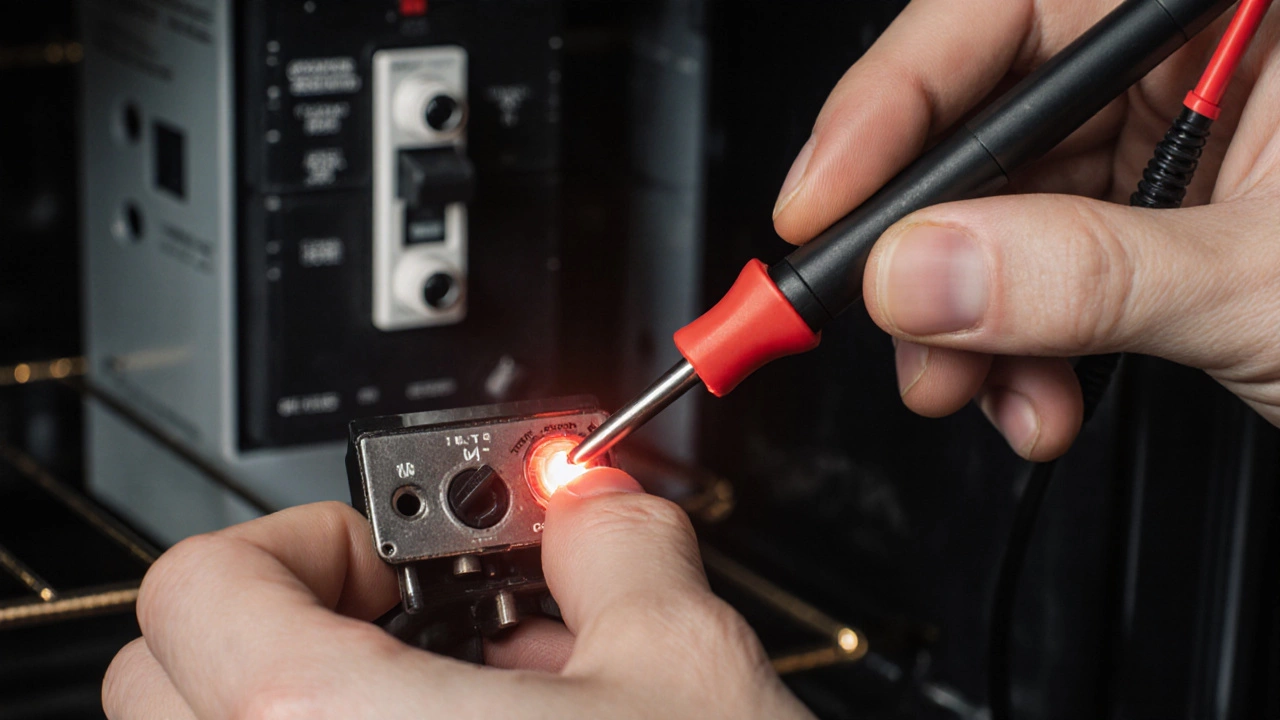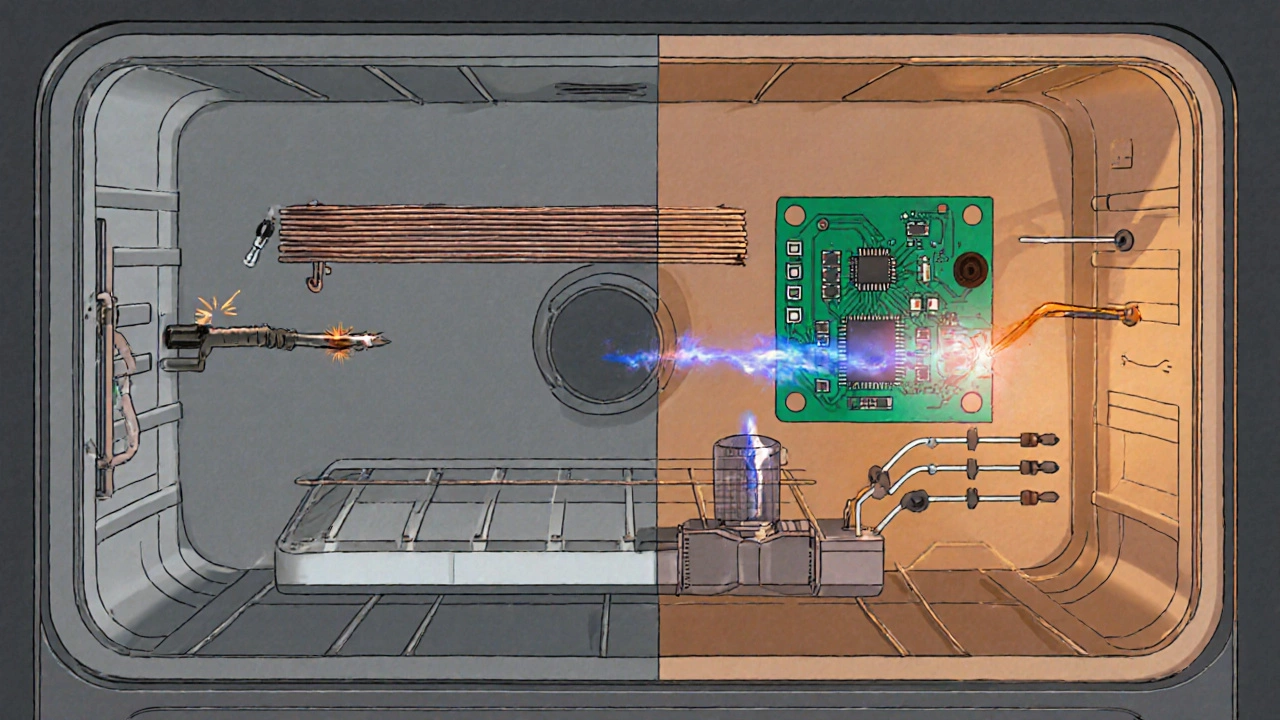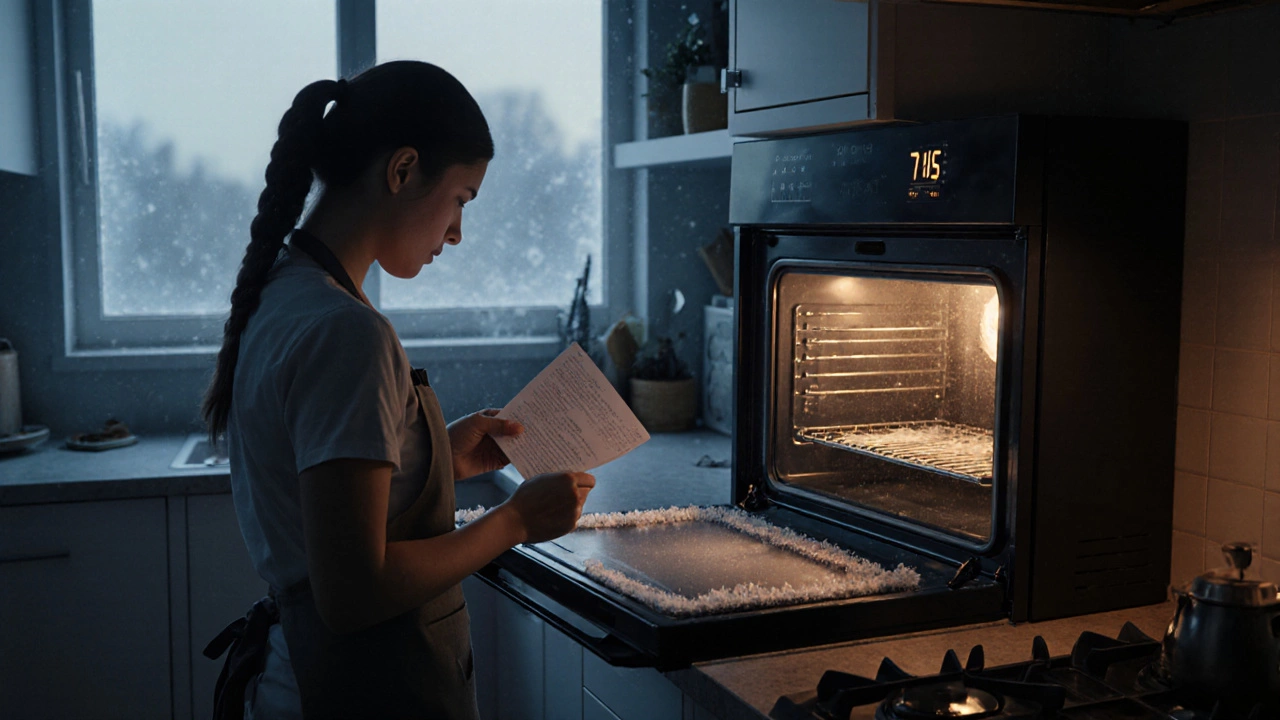When your Oven fails to get hot, dinner plans crumble and the kitchen feels like a cold storage room, it’s more than just an inconvenience - it’s a safety and energy concern.
What Usually Stops an Oven From Heating?
There are a handful of culprits that show up time after time. Below is a quick rundown of the most frequent offenders:
- Faulty heating element - the metal coil that turns electricity into heat.
- Defective thermostat or temperature sensor - the brain that tells the oven when it’s hot enough.
- Bad oven control board - the electronic hub that coordinates heating cycles.
- Blown fuse or tripped circuit breaker - the safety cut‑off that stops power.
- Loose or damaged power cord - a physical break in the energy supply.
- Oven door switch problems - the safety switch that shuts off heat when the door opens.
- For gas ovens, a failed igniter or gas valve - the components that light the flame.
Understanding which of these you’re dealing with is the first step toward a fix.
Step‑by‑Step Diagnosis
- Check the power source. Verify that the outlet works by plugging in another appliance. Look at the home’s Circuit Breaker protects electrical circuits from overload and reset if necessary.
- Inspect the oven’s internal fuse. Most electric ovens have a quick‑replace fuse near the back panel. A visual break or a blown filament means it needs swapping.
- Run a simple heating‑element test. With the oven unplugged, turn the element knobs to ‘Bake’ and look for a red glow when power is restored. No glow = dead element.
- Use a multimeter to check continuity on the thermostat, temperature sensor, and door switch. No continuity indicates a failed part.
- If you have a gas oven, listen for the igniter’s clicking sound and look for a blue flame. No click or flame points to a bad igniter or gas valve.
These checks let you pinpoint the broken piece without tearing the whole oven apart.

Component Deep‑Dive
Heating Element
The Heating Element is a resistive coil that converts electricity into radiant heat is the most common failure point in electric ovens. Over time, the coil can crack or develop hot spots that melt the surrounding insulation. Replacement cost varies by model, but the part itself typically runs $30‑$70.
Thermostat & Temperature Sensor
The Thermostat regulates the oven temperature by toggling the heating element on and off works hand‑in‑hand with the Temperature Sensor monitors the actual temperature inside the oven cavity. If either component reads incorrectly, the oven may stay cool or overheat. Modern ovens often use a digital sensor (often a thin metal probe) that can be tested for resistance at room temperature (about 1100 Ω).
Control Board
The Control Board is the electronic circuit that receives input from the thermostat, sensor, and user interface can develop cracked solder joints or burnt traces, especially in older models. Symptoms include random error codes, no response to button presses, or intermittent heating. Replacing a board is pricey ($150‑$300) and may be best left to a professional.
Fuse & Power Supply
A blown Fuse protects the oven from excess current or a tripped Circuit Breaker will cut power before any heating can start. These components are inexpensive (often under $10) but essential for safety.
Oven Door Switch
The Oven Door Switch detects when the door is open and shuts off the heating element is a small but critical safety part. If the switch sticks in the ‘open’ position, the oven will never receive heat.
Gas‑Specific Parts: Igniter & Gas Valve
For gas ovens, the spark Igniter creates a spark that lights the gas burner can become porous and fail to spark. The Gas Valve controls the flow of natural gas to the burner may also stick closed. Both parts require professional handling because of gas safety regulations.
Comparison: Electric vs Gas Oven Heating Systems
| Component | Electric Oven | Gas Oven |
|---|---|---|
| Primary Heat Source | Heating Element (resistive coil) | Burner + Igniter (flame) |
| Temperature Control | Thermostat & Sensor (electric) | Thermostat & Sensor (electric) + Gas Valve |
| Energy Efficiency | ~12‑15% heat loss (insulation) | ~8‑10% heat loss (combustion) |
| Common Failure Points | Element, Control Board, Fuse | Igniter, Gas Valve, Flame Sensor |
| Typical Repair Cost | $70‑$150 (element, sensor) | $120‑$250 (igniter, valve) |

When to Call a Professional
If any of the following situations arise, it’s safer to hand the job to a qualified technician:
- Repeated tripping of the circuit breaker despite a fresh fuse.
- Visible damage to the control board or signs of burnt circuitry.
- Gas‑related issues - any suspicion of leaks, smelling gas, or a faulty igniter.
- Lack of proper tools (multimeter, wire strippers) or confidence in handling high voltage.
Professional repairs also come with a warranty, which can save money if the problem resurfaces.
Preventive Maintenance Tips
- Keep the oven interior clean; grime can cause overheating and sensor errors.
- Periodically inspect the power cord for fraying or heat damage.
- Run a self‑clean cycle (if available) every 3‑4 months to avoid residue buildup on the element.
- For gas ovens, schedule an annual check‑up of the igniter and gas line by a certified gas technician.
- Never force the oven door closed; a misaligned door can wear out the door switch.
Following these habits reduces the chances of a sudden oven not heating episode and extends the life of your appliance.
Why does my oven make a clicking sound but never heat?
A clicking sound usually means the ignition system is trying to light a gas flame. If the flame never appears, the igniter is likely weak or the gas valve isn’t opening. Replace the igniter or have a gas‑qualified pro inspect the valve.
Can a blown fuse make the oven completely dead?
Yes. Most electric ovens have an internal fuse that protects the heating circuit. If the fuse blows, the oven won’t receive any power, and you’ll see no lights or heat. Replacing the fuse often restores function, but check why it blew first.
My oven heats up but the temperature is always off by 20‑30°C. What’s wrong?
A mis‑reading sensor or a failing thermostat is the usual culprit. The sensor sends inaccurate temperature data to the control board, which keeps the element on longer than needed. Replacing the sensor or recalibrating the thermostat solves the issue.
Is it safe to use a damaged power cord on my oven?
Never. A frayed or burnt cord can cause short circuits, sparks, or even fires. Replace the cord promptly and make sure the new cord matches the oven’s voltage rating.
Why does my oven stop heating after a few minutes?
Overheating protection may be kicking in due to a blocked vent or a faulty thermostat. Check that the oven’s ventilation slots are clear and verify the thermostat’s continuity. If the problem persists, the control board could be shutting off power to prevent damage.

